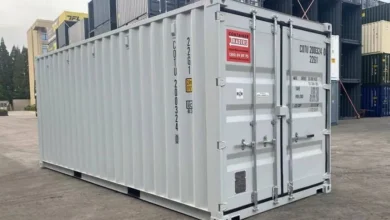
10 Things You Should Know About Using Shipping Containers as Homes
Are shipping containers the new tiny house?
Using shipping containers as homes is one of the trendy ideas in the tiny homes market. It is a market that’s expected to reach $5.8 billion over four years.
Shipping containers can be used to construct a non-traditional, yet still comfy, home. But, before you get started on the dream of living in a shipping container, there are a few things you’ll want to know.
A tiny house shipping container will need much love and planning before it’s ready to go. So read on to find out ten things you need to know.
Table of Contents
1. Learn More About Containers
We know you’re excited to start your home conversion, but you should research the types of containers first. They don’t all come in the same shapes and sizes. There are plenty of different styles to suit whatever you are planning.
It might surprise you to see the dimensions of some of the more unique containers. It might even open up new spaces or ideas that you didn’t think you would be able to incorporate into your design!
2. Take a Look at the Container
When you’re shopping to buy a shipping container, the biggest mistake people make is not seeing the container first. You might think that they’re all the same or that there isn’t anything specific you need to know about them, but you couldn’t be more wrong.
Damage is the main issue here. Whenever we see completed container home projects, they almost always start with a good base. If you buy a container that has been through the wars and is bent, buckled, and beaten, you’ll be spending a fortune fixing it.
3. Spend Extra for Reliable Quality
There’ll be a pull towards keeping your costs as low as possible on this project. But don’t skimp on the container itself. As we mentioned above, it’s so valuable to see the trailer’s condition, but even then, there might be details you miss.
You can circumvent the entire issue by spending a little extra cash at the start of the journey and buying a one-trip container. These containers have the moniker of one-trip because they have only seen use in a single shipping job. This means they’ll be almost brand new.
4. Brush Up on Regulations and Laws
Whenever you build a traditional home, there’ll be a slew of rules and regulations that you must follow before you finish. Every country has building standards. These include fire regulations, so you’ll need to brush up on them before you start.
Also, consider whether your container home placement will be at odds with any local zoning laws. Some areas might not deem a shipping container home as appropriate for land usage.
5. Keep Track of the Scale
You aren’t going to need some of the trade skills involved in building a standard home. But that doesn’t mean this job will be easy. If you’ve got a particularly complicated or large project, consider hiring extra help.
A contractor could be necessary to install more sophisticated building plan elements. Even better, if you can afford it, you might want to hire a contractor to tackle the entire job. That way, you have fewer concerns about being limited by knowledge or skill set.
6. Learn About the Weak and Strong Points
This is another excellent reason that a contractor might greatly help a project like this. Only specific parts of a container will have the reinforcement in a way that makes them able to support large amounts of weight.
When you finally start your construction, make sure you’ve considered this fact. Otherwise, you could be jeopardizing your home by building it on a weak point of the container.
7. Be Realistic About Your Costs
In theory, it might make more sense that a house built from scratch will be wildly more expensive than a shipping container home. It’s not the case, though. There will be a lot of work going into setting up all the utilities required.
That work will come with a reasonable cost. This is either by hiring contractors and extra help or buying all the raw materials required to turn a container into a livable home.
8. Take Extra Care With Plumbing
This is a big one on what it takes to turn a container into a home. You will want an expert on hand to help you with the plumbing of your container. If you’ve got it in your mind to tackle the plumbing on your own, reconsider.
Designing the plumbing chases, for example, is incredibly important. It can be challenging if you don’t have any experience.
9. Don’t Buy a Fixer Upper
Attempt to keep enormous structural changes to the container to a minimum. It’ll cost you a fortune to make massive changes or repairs that require welding, for example. Try to use the space you’ve got as best as possible without requiring drastic modifications.
10. Plan to Combat the Elements
Consider how disruptive the elements can get in your dream location, whether it’s wind or the temperature. Without proper insulation, for example, you’ll be cold in the winter. You’ll also face extreme condensation levels that can ruin your interior with dampness.
In the case of the wind, a metal container doesn’t make a very quiet windbreak. You don’t want to be kept up all night with the sound of rattling metal.
Using Shipping Containers as Homes
No matter why you’re interested in shipping containers as homes, these ten things to know should set you on the right track. Before you know it, you’ll have finished converting a shipping container into a dream home. If you’re looking to flex your creative muscles, it’s not the only place to do it.
Not every home improvement or DIY task has to be as monumental as this one. There are plenty of other ways for you to spruce up your home or find inspiration in a brand-new project. If you’re looking for more great ideas, keep reading our blog!








